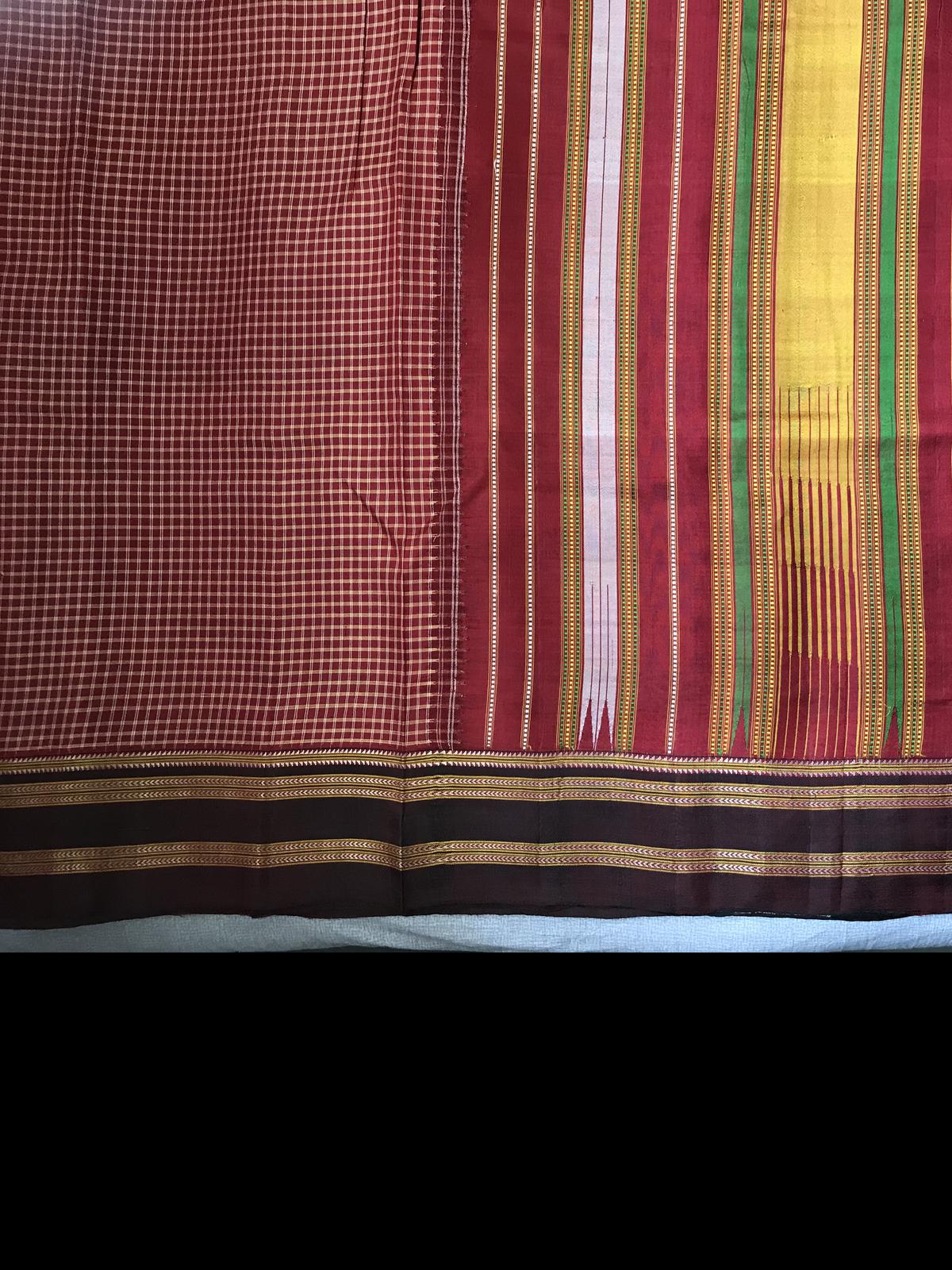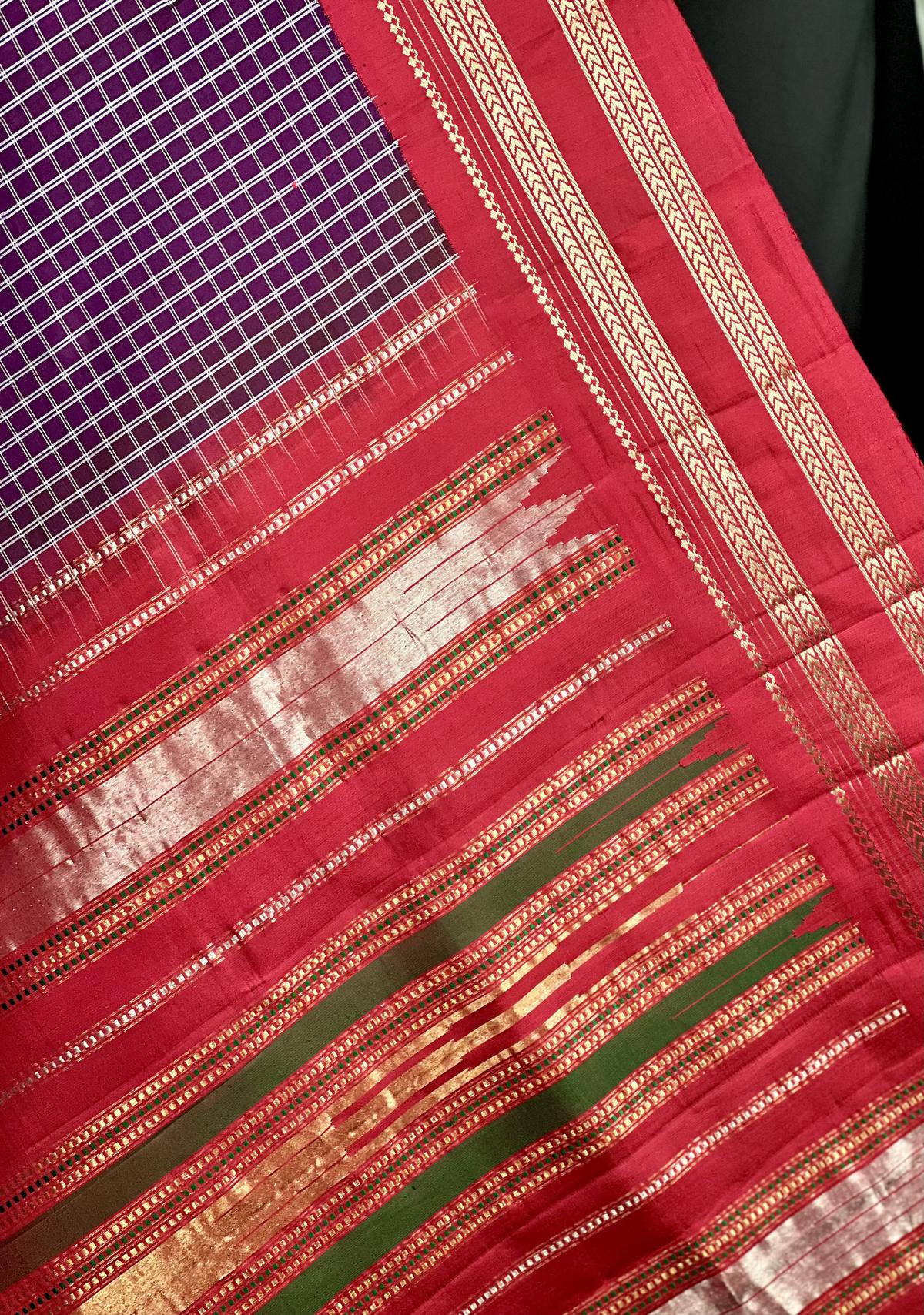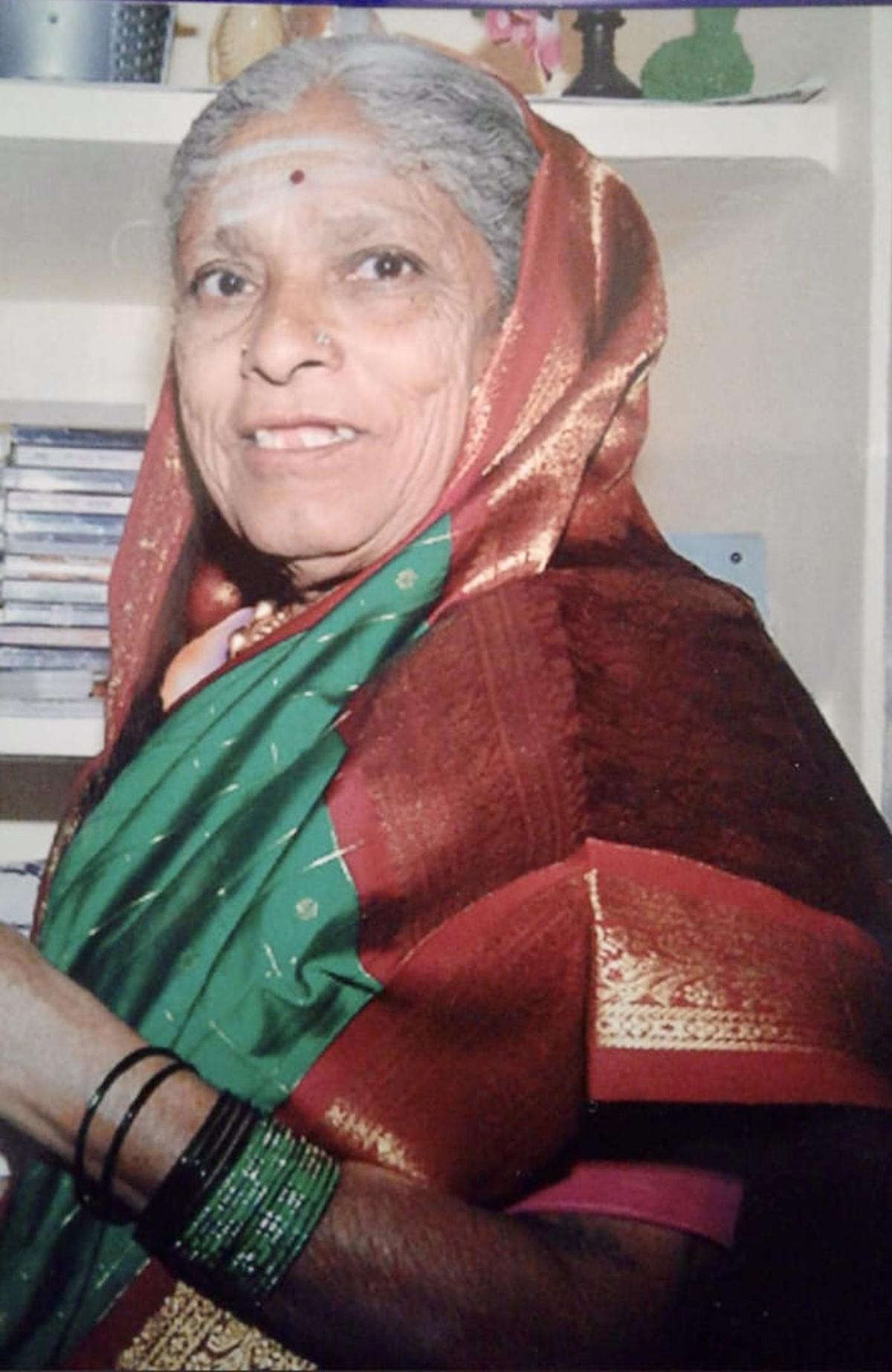Vinay Narkar with weaver Ambubai Dhotre.
| Photo Credit: SPECIAL ARRANGEMENT
For sari revivalist Vinay Narkar, the six-yard and nine-yard unstitched drapes are not merely a piece of cloth but a repository of India’s tradition of native weaves and patterns that showcase the unmatched skills and creativity of the subcontinent’s weaving communities. The threads of a quest began in a verse that Vinay first came across in ‘Ukhane’, a form of Marathi poetry.
To unravel the story behind the verse, Vinay followed a trail that took him from Nagpur in Maharashtra to Karnataka and Telangana. He has made it his mission to revive designs and patterns in saris that have faded away. Many of the designs were exclusive to a region or community of weavers. “Some of these saris had markers that reveal the identity of the community that used to wear them, the provenance of the weaver, the occasion the sari was used for, and several other interesting fragments of information,” Vinay explains.
Designs from the Deccan
Vinay first came across the word motichoor while reading Ukhane, in which a bride introduces her husband by including his name in a verse and avoids saying his name as such. He gathered that the motichoor referred to a pattern in a sari pallu. One of the verses mentioned that it was a new design woven in the Deccan, once a busy weaving hub. However, it was unclear as to what exactly the motichoor pallu was. “I had many questions. How was the design woven in the pallu? What type of saris would have this kind of pattern? In which region were saris with motichoor pallu woven.”

The sari with a Motichoor pallu, which is in the collection of Gulbarga-based artist Vijay Hagargundag. The sari is about 150 to 200 years old.
| Photo Credit:
SPECIAL ARRANGEMENT
That was when serendipity came to his rescue and Vinay got acquainted with Gulbarga-based artist Vijay Hagargundagi. A collector of antiques, he had come across a few saris that were the heritage of the Surpura royal family, now based in the Yadgiri district in Northern Karnataka. “Vijayji found that the 150-to 200-year-old saris were woven in that area itself. To get some woven for his collection, he found weavers who recreated the saris for him. That was in the ‘80s.”
The stripes of the Motichoor pallu
The typical pallu of Ilkal saris is characterised by two or three bands with serrated edges of the same size. The motichoorpallu has large and small stripes in silk. Broken straight lines indicative of motichoor design are seen woven above and below these stripes. “A series of motichoor stripes woven in parallel resembles pearls strewn on the pallu and enhances the look of the sari. The name motichoor pallu may have originated from this visual representation. This design is known by Mochur in Telangana and Muthada in Maheshwar,” says Vinay.
Realising Vinay’s passion for vintage weaves, the collector opened his treasure trove of heirloom saris to Vinay. He got a pleasant surprise when Vijay mentioned that one of the saris had a motichoor pallu. It was an ‘aha’ moment for Vinay. Motichoor design is one of the signature patterns in the textile tradition of Deccan, which is created with coloured silk threads. The pattern is made up of “straight lines that are interrupted at predefined, geometrically perfect linear intervals”. “This pattern is prevalent even today and can be observed in the borders and pallu of saris. It is generally used as a filler, so a pallu named by this pattern was unusual,” explains Vinay.
He says it was evident that the sari belonged to the design tradition of ‘Irkal’ or ‘Ilkal’ of North Karnataka, which has a dagger pattern on the border, known as Katyari Kath in Marathi. That design variation on the pallu distinguished it from an Ilkal.

Vinay Narkar recreated the Motichoor sari pallu, last woven some 40 years ago, with the help of a weaving community in Telegana.
| Photo Credit:
SPECIAL ARRANGEMENT
To learn more about the saris and the weaving technique, Vinay travelled with Vijay to Rangampet, Surpur, Rukmapur, Ammapur, and Kodaikal, once handloom weaving hubs of North Karnataka. To his disappointment, the number of weavers had significantly decreased and in many villages the looms had fallen silent. Although some of the elderly weavers talked about their weaving tradition, he was unable to gather information about the motichoor sari. “Many youngsters had no clue about the legacy of weaving in their villages. Vijayji remembered that he had got the saris woven by Mallamma Dhotre, an elderly woman in Rangampet, who is no more” recounts Vinay.
Tracking the Dhotres
Although Mallamma had passed away, her husband’s second wife Ambubai, their son, and the family were living in the same house. Ambubai had last woven a sari three decades ago. The Marathi-speaking Dhotres belonged to the Swakulsali community, whose primary occupation was weaving. Vinay learned that some of the members of the community were also practitioners of native medicine. Although they hailed from Paithan in Maharashtra, some of them used to travel with the Maratha army to take care of their ailments.

The late Mallamma Dhotre had woven the Motichoor sari pallu with the help of her husband, Girappa, some 40 years ago, for Vijay Hagargundagi.
| Photo Credit:
SPECIAL ARRANGEMENT
“About 250 years ago, a division of the Maratha army had camped at Rangampet. The army left but the people from the Swakulsali community stayed on and went back to weaving,” he says. Ambubai recalled that the task of weaving the motichoor was done by her husband Girappa. Since silk threads were used, it was expensive and woven only for those who could afford it. This sari as well as other saris of this region were also known as Rangampet saris.
Not satisfied with merely discovering the origins of the motichoor sari, Vinay had his group of weavers in a village in Telangana recreate the weave. “It is only when a design is revived from the past that I feel my mission is done,” says Vinay.
Upwards of ₹28,000. For details, reach out to vinay_narkar_designs on Instagram.